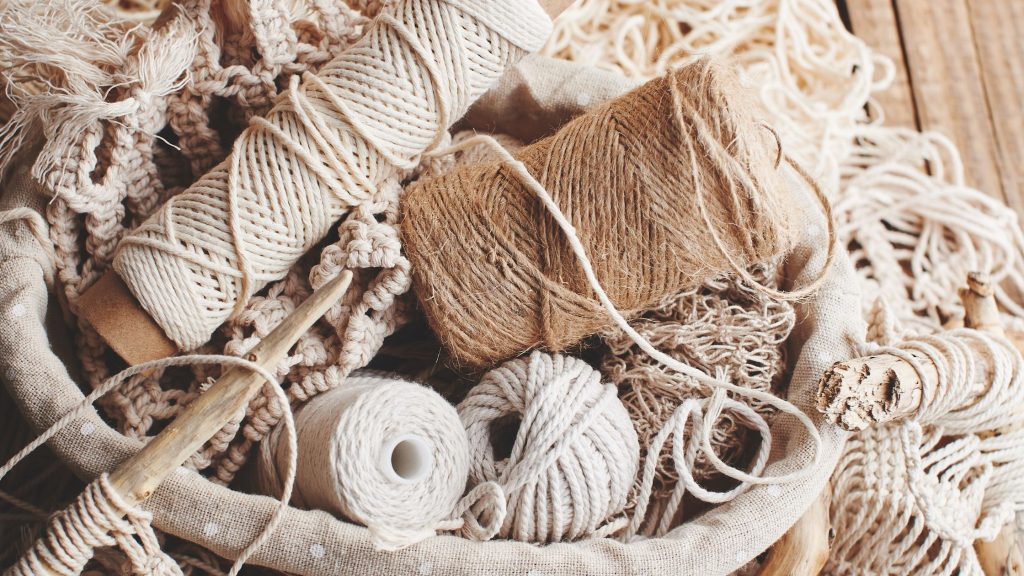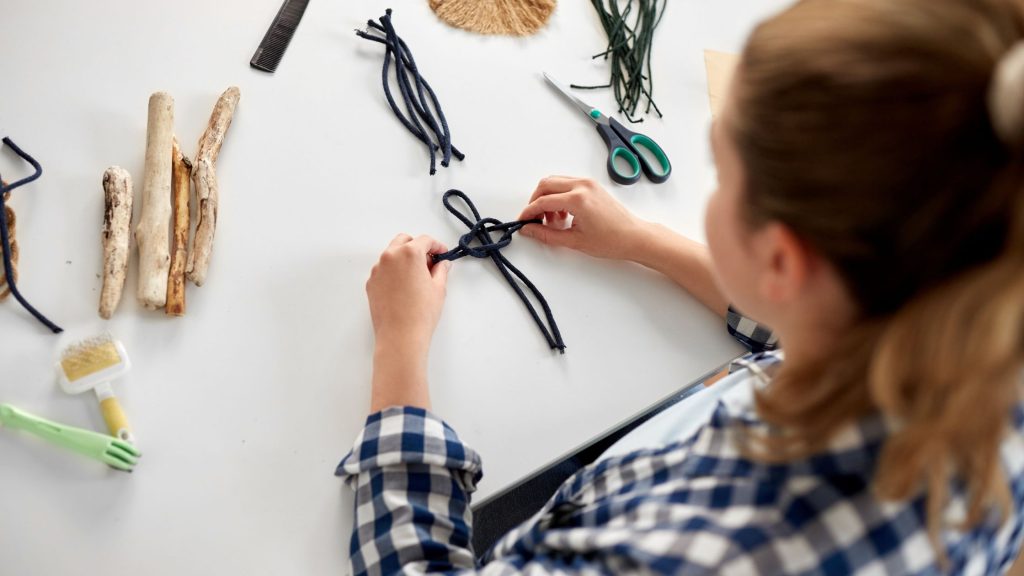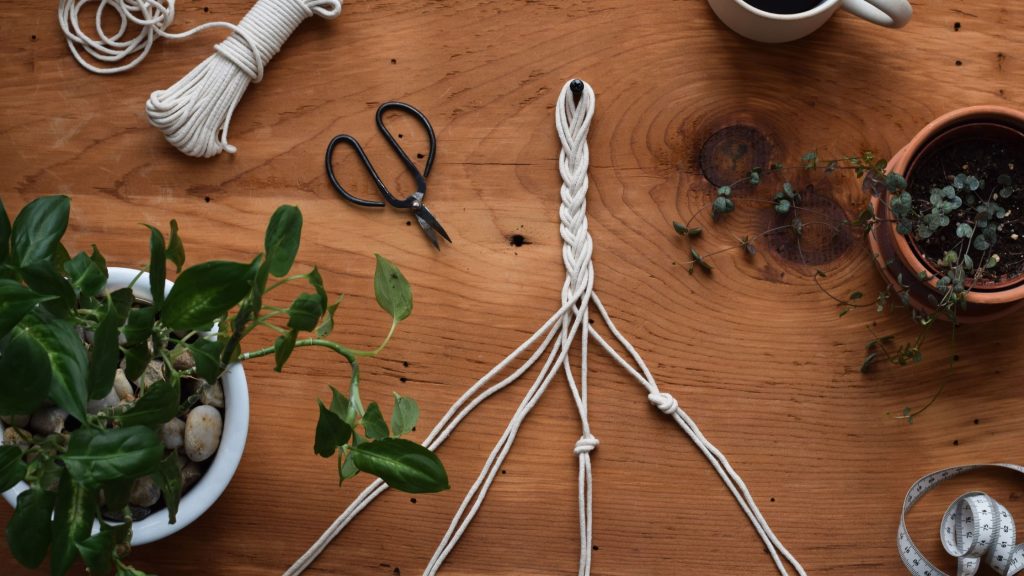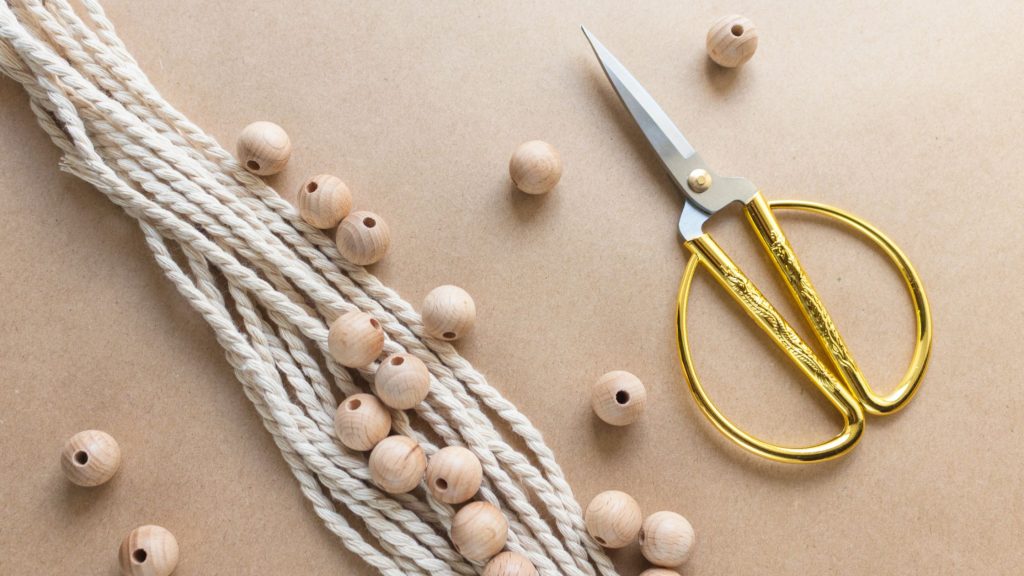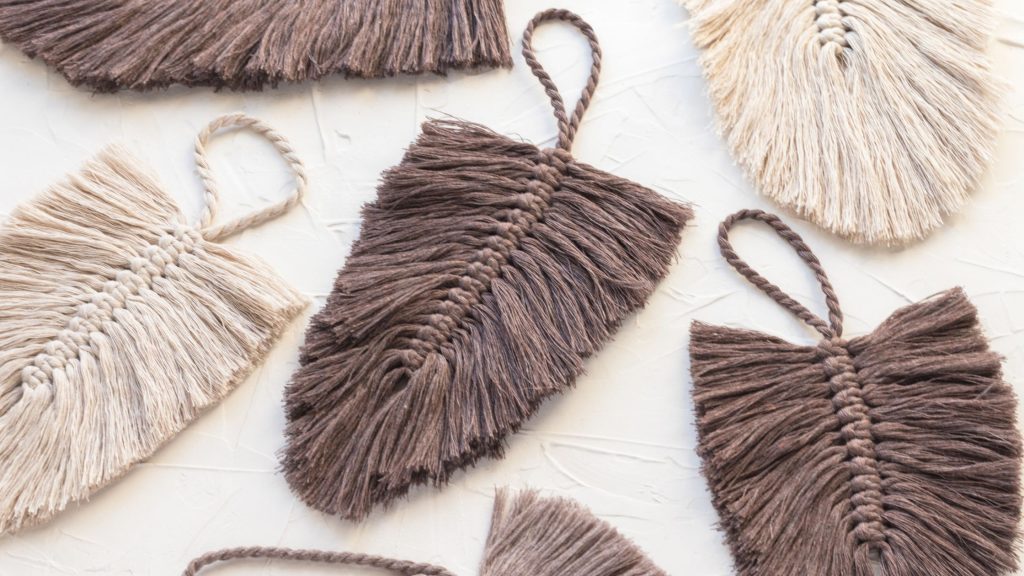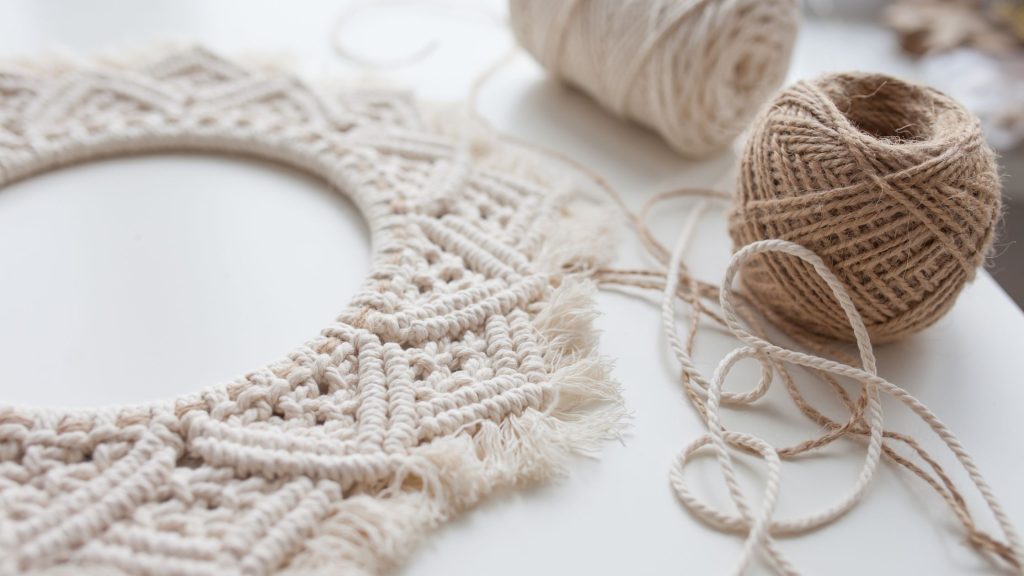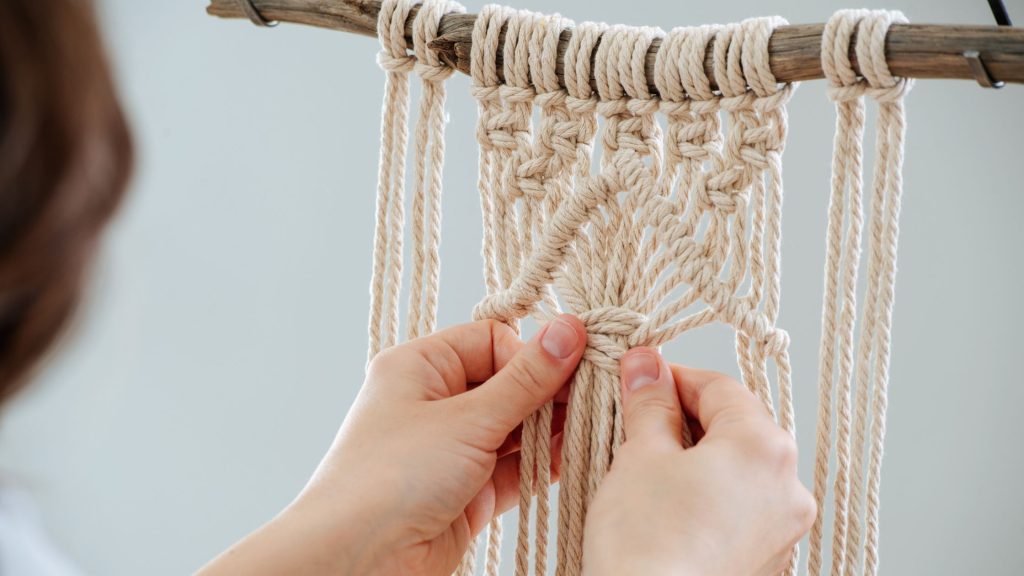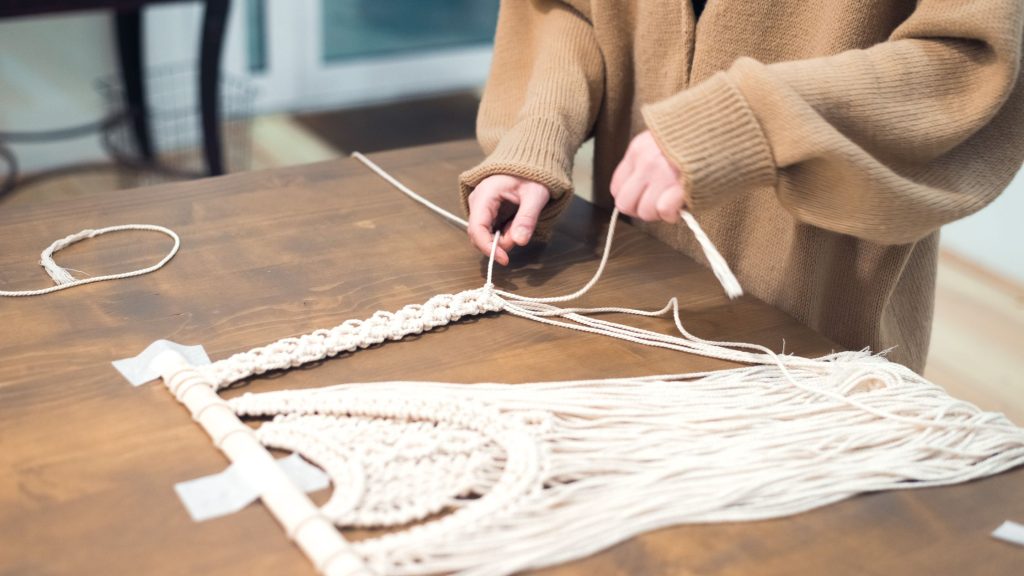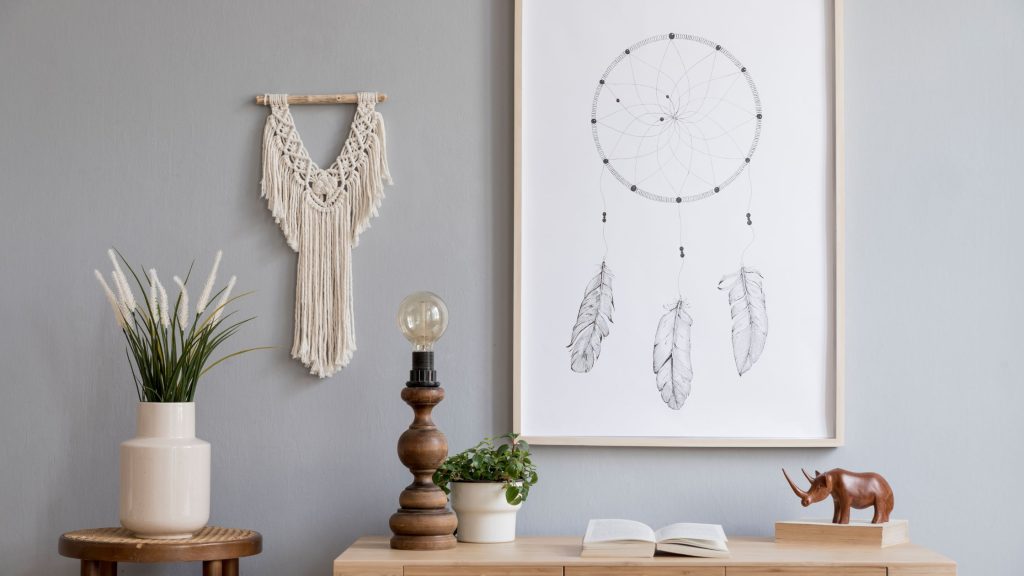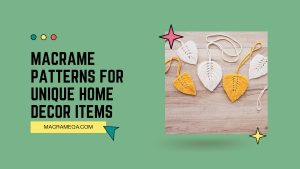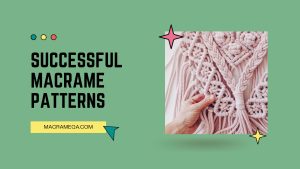If you’ve been searching for a way to add a personal touch to your home decor, look no further than the art of macrame. With its intricate knotting techniques and endless design possibilities, macrame allows you to create stunning patterns that reflect your unique style and personality. Whether you’re a beginner or an experienced crafter, this article will guide you through the process of making macrame patterns for custom home decor, empowering you to transform your living space into a cozy and personalized sanctuary.
Choosing Materials
When it comes to creating beautiful macrame patterns for custom home decor, the first step is to choose the right materials. Macrame cords come in a variety of types, thicknesses, and colors, so it’s important to understand your options before getting started.
Types of Macrame Cord
There are several types of macrame cord available, each with its own unique qualities. Here are some common options:
- Cotton: Cotton cord is a popular choice for macrame projects because it is soft, flexible, and easy to work with. It is also available in a range of thicknesses, making it suitable for both delicate and more substantial designs.
- Jute: Jute cord is a natural fiber that adds a rustic touch to macrame projects. It is durable and has a slightly rough texture, perfect for creating a bohemian or earthy aesthetic.
- Nylon: Nylon cord is a strong and durable option for macrame. It has a smooth texture and is often used for creating intricate patterns or designs that require extra support.
- Hemp: Hemp cord is another natural option that is both strong and eco-friendly. It has a slightly rough texture and is often used for creating macrame jewelry or smaller accessories.
Choosing the Right Thickness
The thickness of your macrame cord is important as it will determine the overall look and feel of your design. Thicker cords will create a more bulky and textured appearance, while thinner cords will result in a more delicate and intricate pattern.
Consider the size of your project and the desired outcome when choosing the thickness of your cord. For larger wall hangings or plant hangers, you may want to opt for a thicker cord to create a statement piece. On the other hand, if you’re creating a small keychain or bracelet, a thinner cord will work best.
Selecting Knotting Tools
In addition to choosing the right cord, you’ll also need to have the appropriate knotting tools on hand. Some common tools used in macrame include:
- Scissors: A good pair of sharp scissors is essential for cutting your cord to the desired lengths. Make sure they are comfortable to hold and able to cut through your chosen material.
- Comb: A comb or macrame brush can be used to comb out and separate the individual strands of your cord, creating a more defined and polished look.
- Measuring Tape: Measuring tape or a ruler will come in handy for ensuring your cords are cut to the correct lengths, especially if you’re following a specific pattern or design.
Understanding Basic Knots
With your materials and tools in hand, it’s time to learn the basic knots used in macrame. These knots form the foundation of most macrame patterns and designs, so mastering them is essential to creating custom home decor pieces.
Square Knot
The square knot is one of the most fundamental knots in macrame. It is created by crossing two cords over each other and alternately tying knots to create a square or diamond shape. The square knot is versatile and can be used to create a variety of patterns, from simple to intricate.
Half Knot
The half knot is another basic knot used in macrame. It is created by tying a knot with one cord around another cord, repeating the process to create a chain-like pattern. The half knot can be used on its own or in combination with other knots to create different textures and designs.
Double Half Hitch
The double half hitch is similar to the half knot but involves tying two half knots around the same cord. This creates a more secure and stable knot, making it ideal for supporting heavier objects in macrame designs such as plant hangers or shelves.
Clove Hitch
The clove hitch knot is commonly used to attach cords to a dowel or rod in macrame projects. It is created by looping one cord over another and pulling it through the loop, securing it tightly. The clove hitch is a versatile knot that allows for easy adjustment and positioning of cords.
Creating Simple Macrame Patterns
Now that you have a good grasp of the basic knots, it’s time to put them into practice and create some simple macrame patterns for custom home decor. Here are a few ideas to get you started:
Wall Hanging with Square Knots
A wall hanging made with square knots is a classic macrame design that adds texture and visual interest to any space. Start by cutting several lengths of cord to your desired size and attach them to a dowel or rod using the clove hitch knot. Then, alternate tying square knots with variations such as diagonal or twisted square knots to create a unique pattern.
Plant Hanger with Double Half Hitch
A plant hanger made with double half hitch knots is not only functional but also adds a touch of greenery to your home decor. Start by cutting four equal lengths of cord and attach them to a ring or wooden hoop. Then, using double half hitch knots, create a spiral pattern down the length of the cords, ensuring each pot is properly supported.
Keychain with Clove Hitch
For a smaller and portable macrame project, consider making a keychain using clove hitch knots. Cut a single length of cord and fold it in half, creating a loop at the top for attaching a key ring. Using clove hitch knots, create a decorative pattern down the length of the cord, adding beads or charms for extra flair.
Incorporating Beads and Accents
To add an extra touch of style and personality to your macrame patterns, consider incorporating beads and other accents. These additions can enhance the overall aesthetic and create a unique look for your custom home decor pieces.
Adding Beads to Macrame
Adding beads to your macrame designs is a simple way to add texture and visual interest. You can thread beads onto individual cords before tying knots or incorporate them as you go along. Experiment with different bead sizes, shapes, and colors to create your desired effect.
Using Accents like Feathers and Shells
In addition to beads, you can also incorporate other accents like feathers, shells, or even driftwood to give your macrame patterns a bohemian or beachy vibe. Attach these accents at various points in your design using knots or by tying them onto specific cords. Be creative and let your personal style shine through.
Designing Advanced Macrame Patterns
Once you’ve mastered the basics, it’s time to challenge yourself and design more intricate macrame patterns for custom home decor.
Here are a couple of ideas to take your macrame skills to the next level:
Intricate Wall Tapestry
Designing an intricate wall tapestry involves combining various macrame knots and techniques to create a stunning centerpiece for any wall. Begin by sketching out your desired pattern and experiment with different combinations of knots. Incorporate different thicknesses and colors of cord to add depth and visual interest.
Hanging Shelf with Macrame Accents
Create a unique hanging shelf with macrame accents to display your favorite plants, books, or decorative items. Start by creating a sturdy base using wooden boards or a repurposed pallet. Then, using macrame knots, create a decorative holder that attaches to the shelf. Add extra flair by incorporating beads, feathers, or shells into the design.
Creating Macrame Patterns with Color
While macrame patterns can be stunning in neutral tones, adding color to your designs can create a vibrant and eye-catching look.
Here are a couple of ways to create macrame patterns with color:
Using Multiple Colored Cords
One way to incorporate color is by using multiple colored cords in your macrame patterns. Select cords in complementary or contrasting colors and follow your chosen pattern, alternating between the colors to create a dynamic design. Experiment with different color combinations to achieve the desired effect.
Dyeing Macrame Cord
If you can’t find the exact colors you’re looking for, consider dyeing your macrame cord to achieve the perfect shade. Use fabric dye or even natural dyes like beet juice or turmeric to create custom colors. Follow the manufacturer’s instructions for dyeing the cord and allow it to dry thoroughly before using it in your macrame projects.
Tips for Customizing Macrame Patterns
Macrame patterns are an excellent way to add a personal touch to your home decor, and there are several ways you can customize them to suit your style and preferences.
Customizable Techniques
Experiment with different knotting techniques and combinations to create your own unique macrame patterns. Don’t be afraid to modify existing patterns or come up with entirely new designs. Macrame is a versatile art form, and the possibilities are endless.
Incorporating Personal Touches
Incorporate elements that reflect your personality and style into your macrame patterns. Consider using cords in your favorite colors, adding beads or accents that hold sentimental value, or incorporating symbols or patterns that have personal significance. Let your imagination run wild and make your macrame patterns truly one-of-a-kind.
Troubleshooting Common Macrame Issues
While macrame is generally a forgiving and flexible craft, there may be times when you encounter common issues. Here are a couple of solutions to some common macrame problems:
Correcting Uneven Tension
Uneven tension in your macrame project can result in an unbalanced and messy appearance. To correct this issue, start by unraveling the knots in the affected area and re-tie them, ensuring that you pull each cord with equal tension. Take your time and adjust the knots until you achieve a consistent and pleasing result.
Fixing Knotting Mistakes
Mistakes happen, but fortunately, most can be fixed in macrame. If you make a mistake while tying knots, carefully unravel the incorrect knot or knots using a pointed tool like a crochet hook or needle. Once undone, re-tie the knot correctly using the appropriate technique. With a little patience and practice, you’ll become skilled at fixing knotting mistakes.
Taking Macrame Skills to the Next Level
If you find yourself becoming increasingly passionate about macrame, there are several ways you can elevate your skills and expand your knowledge:
Macrame Workshops and Classes
Consider attending macrame workshops or classes in your local area. These hands-on learning experiences provide the opportunity to learn from experienced macrame artists and connect with other enthusiasts. Workshops often cover advanced techniques, design principles, and provide valuable tips and tricks to enhance your macrame skills.
Exploring Advanced Macrame Techniques
Take your macrame skills to the next level by exploring advanced techniques and experimenting with more intricate designs. Research and practice new knots, try out different materials, or challenge yourself with larger and more complex projects. Don’t be afraid to push the boundaries of your macrame art and see where your creativity takes you.
Inspiration for Macrame Home Decor
To stay inspired and continue expanding your macrame repertoire, there are several resources available to explore:
Online Macrame Communities and Websites
Join online macrame communities or visit macrame-specific websites to connect with fellow enthusiasts and gain inspiration. These platforms often provide tutorials, patterns, and forums where you can ask questions and get feedback on your projects. Interacting with others who share your passion can be motivating and provide valuable insights.
Macrame Instagram Accounts to Follow
Instagram is a visual platform that is filled with talented macrame artists and designers. Explore hashtags such as #macrame, #macramedecor, or #macramewallhanging to discover a plethora of inspiring accounts to follow. Engage with the community by liking, commenting, and sharing your own macrame creations.
Macrame Books and Publications
Expand your macrame knowledge by exploring books and publications dedicated to this craft. There are several instructional books available that cover a range of topics, from basic knotting techniques to advanced designs. These resources often provide in-depth explanations, step-by-step tutorials, and stunning visuals to inspire your macrame creations.
Conclusion
In conclusion, creating custom macrame patterns for home decor is an exciting and creative endeavor. By understanding the various types of macrame cords, learning the basic knots, and experimenting with different techniques and materials, you can design unique macrame pieces that reflect your style and personality. Don’t be afraid to incorporate beads, accents, and color into your designs, and remember to personalize your patterns to make them truly one-of-a-kind. With practice, patience, and a passion for macrame, you will be able to take your skills to the next level and create stunning macrame home decor that will be the envy of all who see it.


